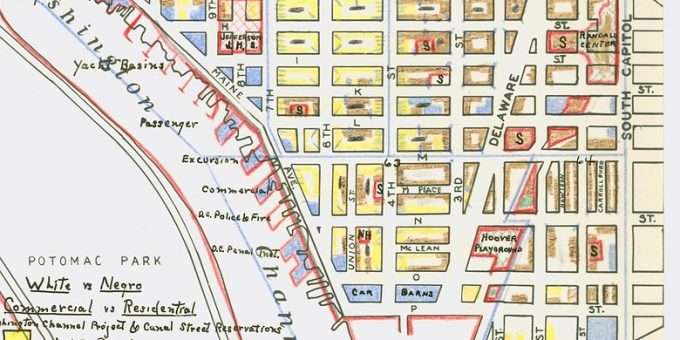
This 1938 map of Black and White neighborhoods in Washington, D.C. may not be all that out of date amid persistent, nationwide residential segregation. National Archives.
Are Neighborhoods Actually More Diverse Today?
Do diverse neighborhoods remain diverse, or are they simply transitioning? In recent years, researchers have used neighborhood diversity as a measure of progress toward racial harmony and away from the legacy of segregation. While some people may perceive there are more racially diverse neighborhoods today, many speculate they are the result of changing demographics rather than integration.
In Sociology of Race and Ethnicity, Richard Wright and colleagues explore whether there is a substantial increase in highly diverse neighborhoods and for how long these neighborhoods remain highly diverse. They define highly diverse neighborhoods as ones in which there are three or more racialized resident groups and no single group is dominant (one group >45% or two groups >80%). They use 1990, 2000, and 2010 Census data to measure the total number of U.S. neighborhoods with high diversity and changes in neighborhood diversity over time.
The authors report that the number of highly diverse neighborhoods increased from 1990 to 2000, but leveled off in 2010. These neighborhoods, typically in large cities, did not remain highly diverse over time. Less than half maintained high diversity levels for over a decade. Most developed through a transition from White-dominated but diverse neighborhoods to majority-Latinx neighborhoods, signalling modern White flight.
Three major findings are developed: gentrification is fueling the emergence of White majorities from highly diverse neighborhoods; racial discrimination in housing persists (evidenced by the way that highly diverse neighborhoods were significantly less likely to form in cities with high percentages of Black residents); and nationally, despite increases in racial diversity, highly racially diverse neighborhoods only represent 1.5% of census tracts. The United States is a long way from desegregation.
